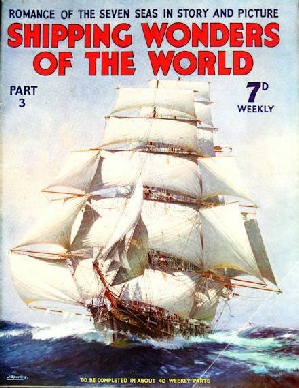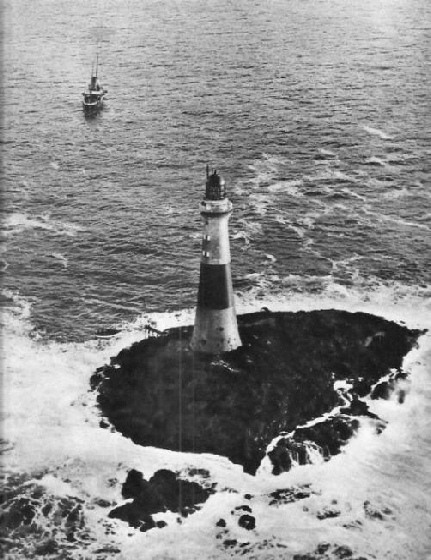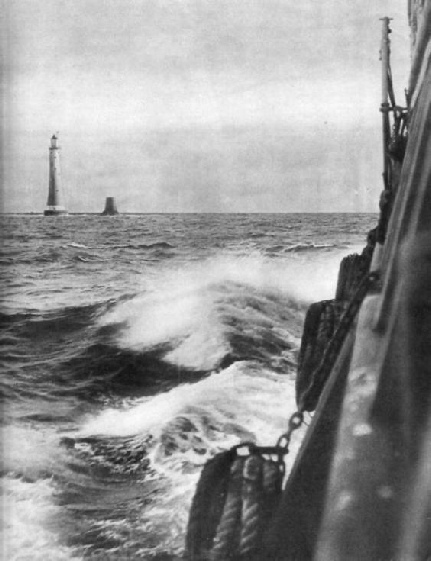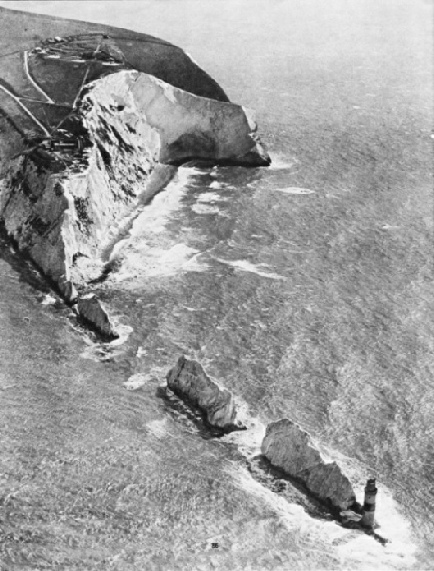
© Shipping Wonders of the World 2012-



Part 3
Part 3 of Shipping Wonders of the World was published on Thursday 27th February 1936.
It was a standard issue of 32 pages. It included a centre photogravure supplement featuring some “Signposts of the Sea”, and formed part of an article of the same title.
The Cover
This week’s cover is a magnificent impression of the famous windjammer Lightning, built by Donald McKay for the Black Ball Line. Reproduced by the kind permission of the Blue Peter Publications Ltd., the original picture was the work of that great sea-lover, the late J. Spurling.
This cover was later reproduced as the colour plate in part 10.

Contents of Part 3
Diving for £1,000,000
The salvage of the Egypt, concluded from part 2.
This is the first chapter in the series Dramas of Salvage
The Triumph of the Normandie
Built at a cost of £8,000,000, and a magnificent contribution to ocean-liner travel, the electrically-driven Normandie represents the peak of French maritime achievement.
The article is the second in the series The World’s Largest Ships.
Signposts of the Sea
The lighthouse, whether built on a lonely, wave-swept rock, perched on a high cliff, straddling the sands on high stilts, or surmounting a steel caisson sunk into the sand, is still - despite the great development of wireless telegraphy - the supreme beacon for every ship.
Signposts of the Sea -2
In the Hebrides. The lighthouse on the Dubh Artach Rocks, in the Sound of Coll and Tiree, is often unapproachable for days in stormy weather. This photograph shows the relief of a lighthouse man who had been injured. The tower has a broad red band, is equipped with a group-flashing light, and shows two quickly successive flashes every thirty seconds. Visibility is 18 miles.

Signpost of the Sea
(Photogravure Supplement)
The Eddystone lighthouse (right) is built on a rock in the English Channel, 14 miles south-west of Plymouth. The present tower is the fourth, and cost nearly £60,000. To the right is the base of an earlier tower. The existing structure has two lights; the main light is 133 ft above high water,and is a white double -flashing light showing two successive flashes of one second divided by an eclipse of 5½ seconds and followed by an eclipse of 22½ seconds. Visibility is 17 miles. The subsidiary light, fixed white and visible 15 miles, is shown from a window 40 feet below the main light to mark rocks known as the Hands Deep, 3¼ miles NW.

Signposts of the Sea - 3
THE NEEDLES, dangerous rocks on the west coast of the Isle of Wight, are protected by a lighthouse, group-occulting, white, red and green every twenty seconds. The visibility is fourteen miles. The tower shows two eclipses of two seconds each; the light between eclipses is two seconds and between groups fourteen seconds. Group-occulting means a steady light, with a group of two or more eclipses at regular intervals.
Contents of Part 3 (continued)
The Navy Goes to Work - 1
In peace or war, by day or night, the Navy works unceasingly. As the guardian of the world’s most widespread Empire, its diverse activities and responsibilities are unique.
This chapter is the first in a series of articles on The Navy Goes to Work.
The Big Motor Cargo Liner
A description of one of an increasingly numerous class of vessel constructed in recent years for all long haul routes. She has several interesting points; in particular, high power arranged on a single screw, and a special hull-form with a curiously raking bow. The Nora Maersk belongs to a fleet of twenty-eight steamers and sixteen motor-ships under the control of a well-known Danish shipowner, Mr. A. P. Moller.
This is the second article in the series on Merchant Ship Types.
Thames to Tahiti
A first-hand account of an intrepid voyage of 12,000 miles from England to Tahiti, across the Atlantic and pacific oceans in a small 38-ft. yacht with a freeboard of only 20 inches at the stern.
The article is the first in the series on Great Voyages in Little Ships. The article concludes in part 4.
